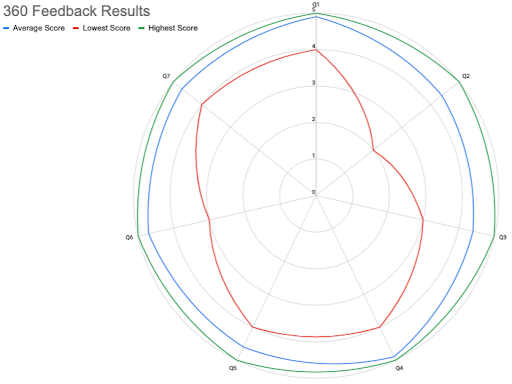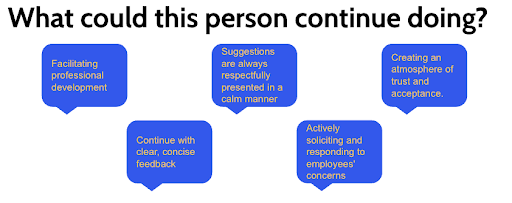“You are the worst manager I have ever had. You don’t care about anyone. No one wants to work for you.”
No, I am not making that up. That is feedback I received from an employee once in my career. To put it mildly, I was taken aback by that feedback. I didn’t see it coming and it didn’t feel good to receive it. On a separate, unrelated occasion, I once gave a raise to an employee and they appeared quite surprised. When I asked why, they explained that since I always had a serious look on my face, they thought I wasn’t happy with their work. In fact, they were a highly valued team member and deserved a raise!
In both scenarios I learned something; if I was better at giving and soliciting feedback, both of these situations could have been avoided.
Before joining Rewind, I read Radical Candor by Kim Scott, an excellent resource to understand feedback and it’s so important. In that vein, I set out to get as much feedback from my team as possible so that I could best address their needs and understand where I could improve as a manager. This blog explores what 360° feedback is and how to administer it with a defined process that promotes personal growth and aligns with Rewind’s values.
What is 360° feedback?
360° feedback is a means of soliciting feedback about one’s performance from a variety of sources. Instead of being top down (coming from your direct supervisor), it can come from your peers, direct reports, or anywhere else in the organization. Typically conducted anonymously, it allows people to provide feedback on an individual based on a set of questions.
Why do 360° feedback?
360° feedback has a few benefits:
- Allows the individual receiving the feedback to improve at their role. How could they know where to improve if they have blindspots around some of their weaknesses?
- Gives the people providing feedback a voice. They know their feedback is being heard (and potentially acted on).
- Increases accountability.
- Promotes dialogue. Much like the retros we run at the end of our sprints, it allows people to surface issues so they don’t fester and get worse.
How to implement 360° feedback
There are a few phases that go into conducting this style of feedback.
Briefing
First, meet with the team and communicate what it is exactly that you are setting out to achieve with this activity. Some topics that you may want to cover include:
- How will it be conducted?
- What will you do with the results?
- Will it be anonymous?
In order to get the best feedback from the sample group, it’s important to set the right expectations. People will avoid giving honest feedback, even in anonymous environments. They need to feel comfortable about providing open, honest, and respectful feedback and know that there is no retribution towards them based on their feedback. We want honest feedback. We want to know where we can improve. If your team doesn’t understand this and feel a sense of safety to provide honest feedback, the assessment isn’t likely to turn up any real blindspots.
Gather feedback
Create a survey; we used an online form. Some tips when gathering feedback:
- Keep it between 7-10 questions.
- Use a mix of closed-ended (a limited number of answers, such as a rating from 1-5) and open-ended questions (many possible responses). A good open
- Have someone review the questions to ensure your bias hasn’t crept in.
- Give the audience a reasonable amount of time to complete it (1-2 weeks).
- Ensure you have enough participants so that a single detractor (or promoter) doesn’t skew the results.
Analyze feedback
Be comfortable being uncomfortable. This is probably the hardest part of the process – finally seeing what your sample group thinks of your performance as a leader. While it might make you cringe to see feedback around areas of improvement, embrace it. Reframe it and think about how actioning some of these items will improve your team’s happiness at work and your performance as a leader.
After reading the feedback for the first time (and possibly curling up in a ball in the corner), start analyzing it:
- Are there trends in the feedback?
- Are there things that I alone can solve?
- Are there things that I need help to solve? Who can help me solve them?
- Try to categorize feedback:
- What are short-term improvements or quick wins?
- What are longer-term improvements that may take time to correct?
- What will it cost to make the change?
- Example: Reduce emails to the team. Cheap and a quick win.
- Example: Team thinks you need to work on presentation skills. Requires investment and time to develop public speaking skills.



Take actions
As a follow-up to the feedback analysis, identify some actions that you can take that specifically address some of the feedback. Use your characterizations to determine the priority of your actions. Is there something that needs immediate attention? Are there some actions that are nice to haves?
To help hold you accountable for some of these actions, try incorporating them into your Objective Key Results (OKRs) for all to see. No better way to motivate yourself to get them done!
Follow-up with team
Delighting Customers. Your team is your customer – you provide a service (leadership, mentorship and team management, among others) for them. So let’s do our best to delight them. Share the results of the feedback with them, and explain what actions you plan to take. This will demonstrate that:
- You care about the team and respect their feedback.
- The survey was not a waste of their time.
- You value personal growth.
- If they speak up, change can happen.
Final thoughts and takeaways
While seeking out feedback from your peers, direct reports, and colleagues can seem intimidating or uncomfortable, there is huge value in doing so. In going through the process, I learned some valuable things:
- I know where I can improve. Some were obvious to me, and others were surprises.
- The team respects the fact I was transparent and open with my feedback.
- The actions I implemented were highly valued by the team as they can see feedback being actioned.
- And I am not, in fact, the ‘worst manager ever.’
If you’re interested in a team driven by open and honest feedback, perhaps you’d consider joining us? Rewind is hiring developers, DevOps, security, and more.




